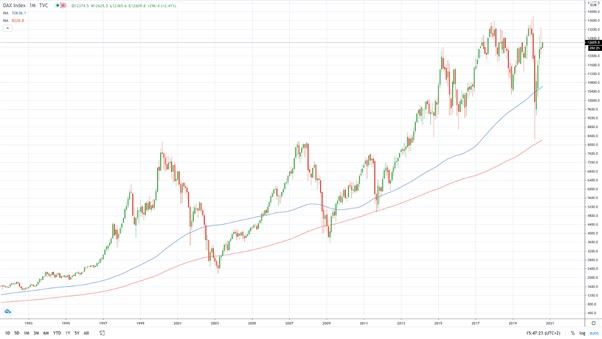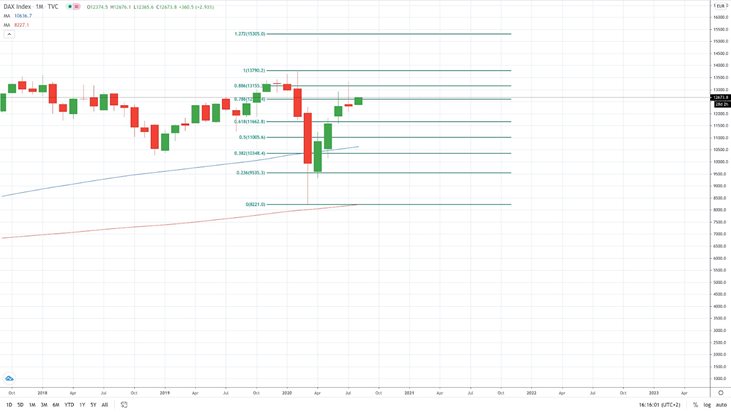Historical Performance
As a leading German index and home to major German stocks, including BMW, Deutsche Bank, VW and Siemens, the DAX 40 has always been closely followed by investors.
The DAX 40 posted large gains, tracking other global indices during the 1995 dotcom bubble when stocks were led higher by U.S. technology stock valuations.
In the five years between 1995 and 2000, the DAX Index gained 300%, rising to a record high of 8,000 from about 2,000. In the next seven years, the price action traded in a V-shaped fashion, plunging to 2,220 in 2003, before rising again to match the 2000 high in 2007.

The 2008 global financial crisis facilitated another pullback before DAX 40 started to ascend again. This led to a continuous uptrend with three cyclical corrections in 2011, 2015, and 2018.
In 2020, the DAX Index was trading at record highs before the Covid-19 pandemic triggered the fastest stock market selloff in history. The DAX 40 went from trading at 13,800 to 8,250, dropping 40% in just four weeks’ time.

Spread and Leverage
While it carries significant risk, Institutional and retail investors also tend to spread-bet on the DAX. As a derivative product, spread betting doesn’t let you take ownership of the underlying asset. Instead, traders speculate on whichever direction the price will move in the future.
Leverage is a key element of spread betting, as it allows traders to increase market exposure. Hence, investors tend to leverage DAX to potentially magnify profits, but also losses. For this reason, it is important to create a sustainable risk management strategy, bearing in mind the amount of capital that you are putting at risk.